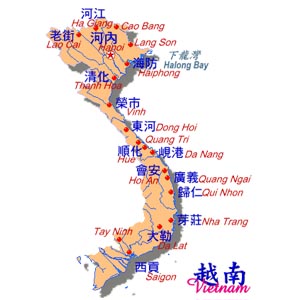
Vietnam’s industry has shown rapid growth in recent years. The most promising industries are undoubtedly those that are industrialized, modernized, and advanced technologies, which have a certain role in driving and promoting Vietnam’s GDP growth.
Vietnam will prioritize the following industries:
(A) processing manufacturing and chemical industry
1. Machinery and metallurgy
By 2025, priority will be given to the development of machinery and equipment, automobiles and spare parts, and steel for industrial production; after 2025, priority will be given to the development of shipbuilding, non-ferrous metals and new materials.
2. Chemical industry
By 2025, priority will be given to the development of basic chemicals, oil and gas chemicals, plastics and rubber spare parts chemicals; after 2025, priority will be given to the development of pharmaceutical chemicals.
3. Agriculture, forestry and fishery processing industry
By 2025, priority will be given to increasing the processing ratio of major agricultural products, aquatic products and wood products in accordance with the adjustment of the agricultural industrial structure. Adopt international standards in the production and processing process to build the brand and competitiveness of Vietnamese agricultural products.
4.Textile and footwear
By 2025, priority will be given to the development of raw materials for the textile and footwear industry for domestic production and export; after 2025, priority will be given to the development of high fashion and footwear.
(2) Electronic communication industry
By 2025, priority will be given to the development of computers, telephones and spare parts; after 2025, priority will be given to the development of software, digital services, communications technology services and medical electronics.
(3) New energy and renewable energy
By 2025, vigorously develop new and renewable energy sources, such as wind, solar, and biomass capabilities; and vigorously develop nuclear, geothermal, and tidal energy after 2025.
Vietnam’s manufacturing industry grows rapidly
Vietnam is not only a production base for labor-intensive industries such as clothing and footwear, wood processing, but also increasingly popular with electronics manufacturers in recent years. Multinational companies such as Samsung, Intel and Microsoft, Nokia mobile phones have expanded production in the country. In addition to these existing companies expanding production, other overseas electronics companies have also continued to influx, driving the total output value of the Vietnamese electronics industry to rise steadily, with a compound annual growth rate of 59% from 2008 to 2013, which is higher than the growth of the overall manufacturing output value. Rate (24%) more than doubled. Since 2013, electronics have become Vietnam’s largest export cargo.
Vietnam’s export growth has been significant, mainly driven by foreign direct investment.
According to the Ministry of Industry and Trade of Vietnam, in 2015, foreign direct investment enterprises accounted for 71% of Vietnam’s total exports, and almost all of the country’s exports of telephones, electronic products, computers and components came from foreign companies. In 2015, the United States, the European Union, ASEAN, China, Japan and South Korea were Vietnam’s main export markets.

In recent years, the main imported products include machinery, equipment and parts, as well as electronics, computers and accessories. Most of the imported machinery and equipment are related to the assembled goods exported. China is Vietnam ’s largest source of imports, followed by South Korea, ASEAN, Japan, the European Union and the United States.
China-Vietnam bilateral trade in 2019
Vietnam has released import and export data for 2019, with China still Vietnam’s largest trading partner, Vietnamese media reported. Data shows that in 2019, the total import and export volume of China and Vietnam reached 116.87 billion US dollars, which is the second consecutive year that the trade volume of the two countries exceeded 100 billion US dollars.
In the nearly $117 billion import and export cooperation, Vietnam’s export to China was $41.41 billion, an increase of only $150 million or 0.36% over the same period last year, and its import from China was $75.452 billion, an increase of $10 billion or 15.3% over the same period last year.
China’s export to Vietnam continues to grow at a high speed, and the Vietnamese market has attracted the attention of Chinese enterprises. In recent years, Chinese enterprises have set off a boom in investing and setting up factories in Vietnam.
Vietnam’s foreign trade in 2019
Vietnam’s total foreign trade in goods is expected to be US $516.96 billion in 2019. Among them, Vietnam’s export volume of goods is US $263.45 billion, an increase of 8.1% year on year; the total import volume is expected to be US $253.51 billion, an increase of 7% year on year. The trade surplus is about $9.94 billion.